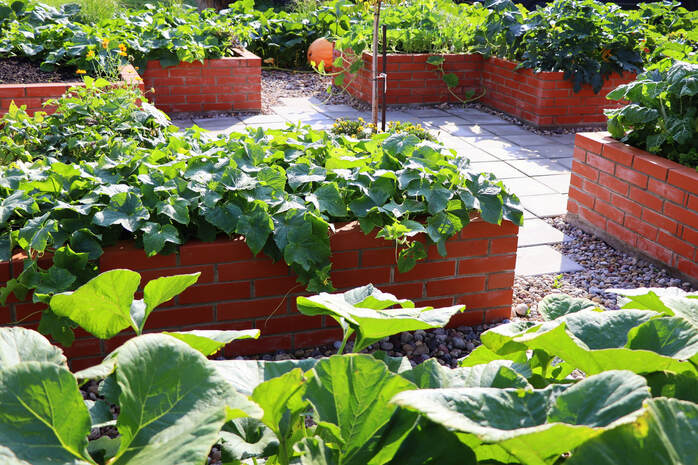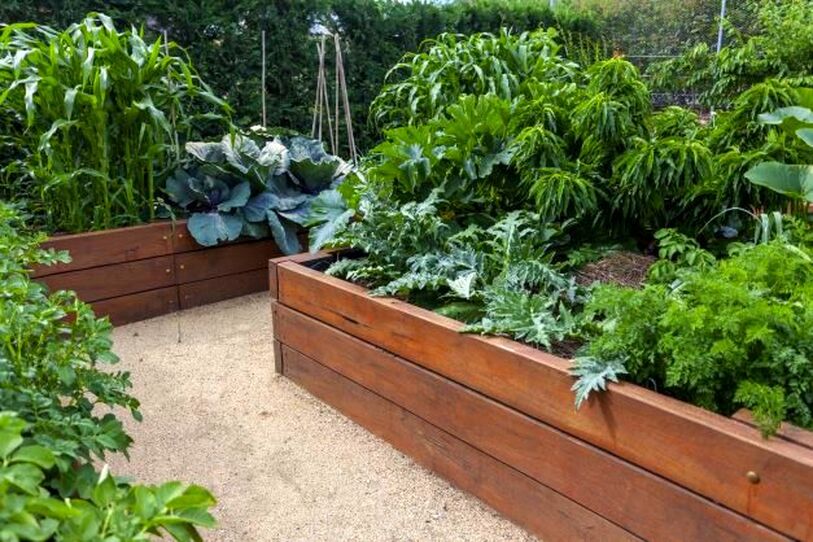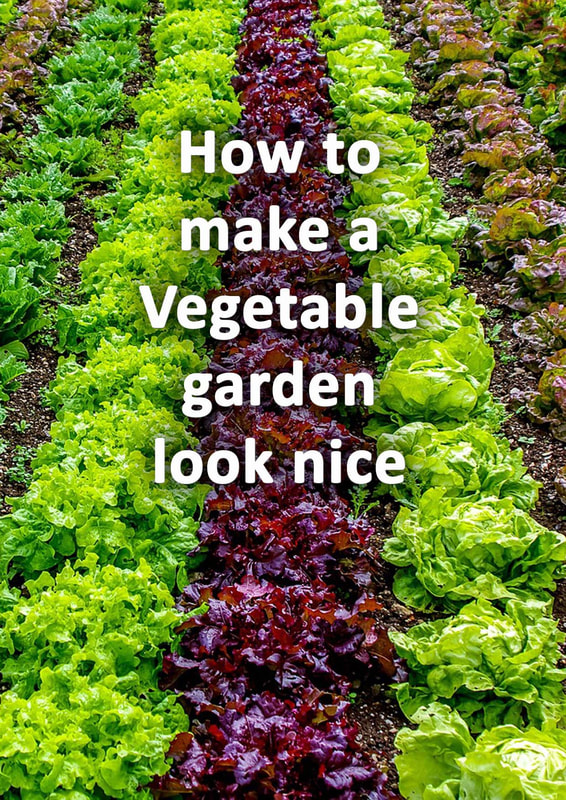|
This article contains affiliate links
There is something so satisfying about growing your very own fresh fruit and vegetables.
Vegetables grown in your own yard always taste far superior to any supermarket produce. However, growing vegetables in virgin soil can be very challenging for some. This is because your existing soil may lack the nutrients, texture or depth for optimum for vegetable cultivation. Furthermore, shallow or boggy soil can be detrimental to successful vegetable growing. This is why building raised vegetable beds is always a favourable option. Not only do they create more defined growing beds they also allow you to add better quality topsoil. In this article I will provide a topical overview of installing vegetable raised beds into your garden. Vegetable garden landscapingVegetable garden landscaping is a topic which does not get much discussion generally. This subject includes the design, planning and building of raised vegetable gardens. Successful vegetable garden landscaping involves knowing what you want to cultivate and developing your site to accommodate such. If you have very boggy soil you may wish to build raised vegetable beds to provide a better growing medium. You may love growing carrots so will require vegetable beds with a free draining and loamy, soil. Below I will continue to highlight some of the primary considerations of building productive vegetable gardens. Why make raised beds for vegetables?Good quality soil
One of the main advantages of building raised is filling them with generous depths of quality topsoil. This makes for easy sowing, transplanting, digging and weeding. A good quality topsoil enables vegetable roots to grow deeply. This provides them easy access to nutrients leading to healthy crops.
Organisation
Installing raised beds allow you to organise your growing areas neatly. This is particularly useful if you are implementing seasonal crop rotations.
Easy access
A great benefit of raising your vegetable growing areas up is much easier access. This results in less bending and awkward digging which is easier on your lower back. Raising beds up can also allow your vegetables to access more sunlight.
Containment
Some crops require a suitable amount of containment to prevent spreading. This is because they may have a robust running habit. Some good examples of these include mint and Jerusalem artichoke.
Positioning your raised vegetable beds
Positioning your raised vegetable beds is actually very important for success. Too often, vegetable gardens are located at the very end of your yard and out of view. This can lead to a gradual neglect of your growing areas. It is beneficial to position your raised vegetable beds somewhere in full sun within full view of the home. You should not be able to visit your patio without being drawn over to your vegetables.
This enables you to always keep an eye on your crops throughout the season. There will be times when you will need to water more, weed more and harvest more.
Raised vegetable beds require daily attention during the summer so make them very accessible. Ideally your vegetable garden will also receive at least 7 hours of direct sunlight a day. How do you make a raised bed for vegetables?
When it comes to building raised vegetable beds you have a few options. Some of these are more labour intensive and costly than others. However, on the whole, the more costly the installation the longer beds will last the test of time. Below I have listed the most typical methods of building raised vegetable beds. Wooden planks
Wooden planks can make reasonable raised beds but they are never completely permanent. The most typical example of plank raised beds are 6x2 timber boards fixed to posts. These do make effective vegetable beds but will generally degrade after 10 years. Many people go down the route of lining these raised beds with plastic to extend their life. Plastic will reduce the rate at which timber decays but not by that much. I have found that plastic actually forces water to sit idle around joins and fixings. This can actually accelerate corrosion of fixing brackets and screws. Timber sleepers
Probably the best timber option for building raised beds is sleepers. These thick and robust sections of timber were originally made to base railway lines. Timber sleepers have now become a very popular way of building raised vegetable beds. The best way to build vegetable beds with sleepers is to fix them to 4x4 timber posts. These can then be concreted into the ground for extra stability. Below I have included some examples of the raised vegetable beds I have built using sleepers. Concrete blocks
Raised vegetable beds built with concrete blocks are sure to last the test of time. Unlike timber sleepers, concrete will not degrade in damp conditions. However, raised beds built with concrete will require a robust concrete foundation. This means a fair amount of excavation will need to take place for the footings. Building raised beds in such a way will be more labour intensive and costly. For beds which will last beyond 15 years concrete is a more durable choice than timber. Bricks
Like concrete, brick raised beds will last much longer than timber beds provided they are built correctly. Bricks are more expensive to buy than concrete and require skilled labour to lay. This makes brick vegetable beds one of the most expensive options. However, unlike concrete, bricks look much more attractive than concrete blocks. As bricks are also made from fired clay their colours will not fade over time. Bricks can become vulnerable to freeze and thaw action if continuously wet in sub zero temperatures. It’s a good idea to apply weather proof sealants to your beds and ensure there is adequate drainage. Old pipes
Old pipes with a diameter of 500mm and above can make very easy and cost effective raised beds. These are easy to cut to suitable depths and then set into the ground vertically. The 600mm plastic sewer pipes below are also available to buy new online. What is the best material for building raised beds?
The best materials for building raised vegetable beds are those which do not degrade. Any structure that retains large quantities of moist soil needs to be extremely robust. Both timber and sheet metal will tend to degrade over time. Therefore, the best materials for building raised beds are masonry materials based upon a concrete foundation. These include brick, concrete and natural stone. Such construction is more expensive and labour intensive that other materials but will last the test of time. What is the best material surface for around raised beds?
The best surfacing materials around raised beds are durable, sealed, hard wearing surfaces. These include; concrete and paving. Loose gravels and open textured, permeable surfaces will succumb to a build up of dirt. This will lead to moss, weeds and a slippery sludge in winter. Raised vegetable beds are continuously being worked year after year. This leads to surrounding surfaces accumulating a continuous dusting of loose soil. This can eventually turn loose gravels into a carpet of weeds. Drainage for raised beds
It is important that all raised beds have adequate amounts of drainage. This is so the soil does not become waterlogged and stagnant. Typically drainage is added to raised beds by installing weep holes at the base. The amount of drainage your raised beds need will depend on their height and local soil type. If your garden naturally has boggy soil, consider installing a landscape drainage system first. How deep should raised vegetable beds be?
There is no perfect depth for all raised beds to be. The perfect depth for a raised bed will depend upon your existing site conditions and soil type. As a general rule of thumb 400mm is a good height for a raised bed. This will provide a generous growing depth without the bed being so high it easily dries out. What vegetables can you grow in raised beds?
You can pretty much grow any type of vegetable within a raised bed. All you need to remember is, the higher your bed is, the greater chance of it drying out. Some vegetables can tolerate dryer, well drained conditions more than others. However, most crops will require a reasonable amount of moisture during the summer to successfully crop. Therefore to grow a wide spectrum of vegetables you will need to irrigate raised beds during the growing season. Vegetable garden landscapers and builders
Buckinghamshire landscape gardeners are expert vegetable garden designers and builders. From edible planting schemes to building raised vegetable beds, we provide it all. Our vegetable garden construction services cover Buckinghamshire and surrounding counties.
Our typical and local service areas include:
'As an Amazon associate i earn from qualifying purchases'
0 Comments
Leave a Reply. |
The Author
|
Landscaping services across Buckinghamshire, Amersham, Aylesbury & High Wycombe
Hyde Heath, Amersham, Buckinghamshire |
|


























